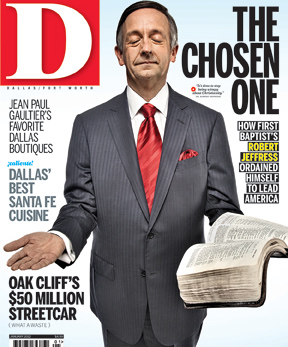Statistics measuring drinking and driving can be tricky. If you’re looking for the city where drunken driving is most prevalent, you can’t just count arrests. One city might police it more strenuously than another. But there can be no confusion about traffic deaths in which alcohol plays a role, and Dallas has more of those than any other city in the country.
In the only peer-reviewed (i.e., trustworthy) study found on the subject, LSU’s Department of Public Health and Preventive Medicine ranked 97 cities based on their number of alcohol-related traffic fatalities. The study, released in 2002, was titled “The Population Consumption Model, Alcohol Control Practices, and Alcohol-related Traffic Fatalities.” There Dallas sat at the top of the list, with 10.23 deaths per 100,000 residents per year. Kansas City, Missouri, came in second, with 10.10 deaths. Albuquerque’s 8.62 was a distant third.
If Prohibition taught us anything, it’s that people will always find a way to drink. But they don’t have to drive—except when a city and its policies practically coerce the crime. All of the top 10 cities from the LSU study are in the Sun Belt or Rust Belt, where the car is king. If you don’t consider Kansas City a Rust Belt town, then I’ll tell you that it has more highway miles per capita than any other U.S. city. People there drive because the city was built for cars. Does that sound like someplace familiar?
Dallas was built to be driven. Why else would a city mandate a minimum number of parking spaces for bars? Codes and laws like that oftentimes have unintended consequences. Think of the patchwork of wet and dry areas that existed in Dallas until it was eradicated in 2010. During the patchwork prohibition period, bars and liquor stores sprung up in clusters at the boundaries of dry areas. Bars and liquor stores tend to cause problems when they do this. For one, since the citizens of dry areas are no more puritanical than their “wet” neighbors, they must drive to imbibe.
The market can be amazingly unforgiving and relentlessly rational. The same is true of cities. Corporations build headquarters near a suitably skilled employment base (or near where the leadership resides). Similarly, service-oriented businesses (such as bars) will locate as close to consumers as they’re allowed to. In less regulated places, smaller neighborhood bars can serve customers who walk there, and a corner market can stock a few alcoholic beverages for those who prefer to drink at home. Some clustering will always occur, but for the most part the city will naturally organize itself, find order.
Another example of a law that had unintended consequences: the incremental stiffening of the state’s open container laws. While the goal, to curb drinking and driving, seems a noble one, the reality is that measures were taken to keep federal highway dollars flowing. We know this because the federal government offered to contribute $86 million to a new highway project in 2001. In exchange, Texas would ban all open containers in cars. If Texas hadn’t, the feds would have paid the same amount of money to education and marketing programs against drinking and driving. Texas chose the pavement.
There is a direct, one-to-one relationship between increase in road capacity in a city and the number of vehicle miles traveled by its citizens, on average. Building highways separates us. It divides and scatters us, diminishing the desirability of more central, denser areas, while making land at the outskirts of the city viable for development. As we move farther apart, driving becomes a necessity. The process is cannibalistic—not “growth,” which is how this kind of urban expansion is usually described. A study by Brown University economist Nathaniel Baum-Snow found an 18 percent reduction in city population for every inner-city highway built. People choose (quite rationally) to live in less dense and surprisingly more dangerous exurban environs.
In other words, in trying to curtail drinking and driving, we wound up building more roads. By building more roads, we guaranteed that people will drink and drive.
While the city rankings from LSU are somewhat dated, one statistic that is replicated year after year is the number of alcohol-related traffic deaths by state. Texas tops that list every year. Transportation policy and funding are largely set at the state level, but it is our cities that are most profoundly impacted, our lives. Cities are like living creatures. Tinker with their DNA, and they react drastically. TxDOT has too much power over the building blocks of our cities. While reforming the giant highway-industrial complex might seem daunting, the least we can do for starters is eliminate the parking minimums at drinking establishments. After that, we can talk about getting rid of TxDOT entirely.
Write to [email protected].







